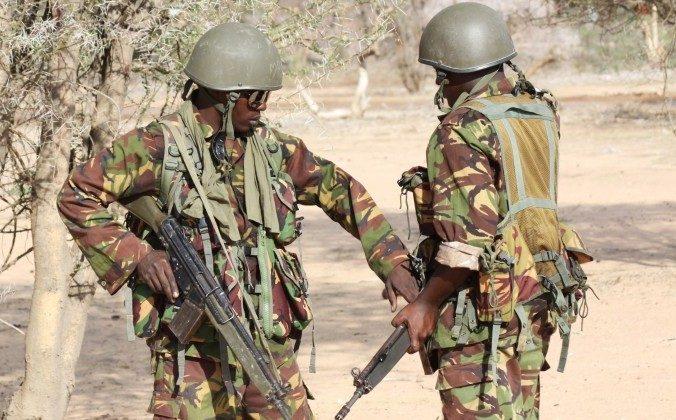Kenya’s incursion into Somalia to fight the Islamist al-Shabab militia continues, but any hope of a quick and decisive victory seems dashed with reports that the militants have fallen back to their strongholds or blended in with the population. Meanwhile, a row between Kenya and Eritrea over the latter country allegedly selling arms to al-Shabab may spread the conflict further.
On the third week of Kenyan military operations into southern Somalia, dubbed Operation Linda Nchi, 50 percent of al-Shabab had been “removed” said Lt. Col. John Maison Nkoimo, who was quoted in the Kenyan newspaper Daily Nation, Nov. 7. These kinds of messages have been met with skepticism among both domestic and overseas commentators, however. To date, reports from the battle zone have mostly been about confusion, skirmishes, and attacks against targets that may not even have been al-Shabab.
“Al-Shabab is not a monolithic force and never has been,” J. Peter Pham, director of the Michael S. Ansari Africa Center at the Atlantic Council, told The Epoch Times in an email. “Most of those identified as ‘al-Shabab’ are clan militiamen or other irregular fighters who can, and will, blend into their surroundings as needed. They certainly are not going to mass so that well-armed Kenyan forces with air and artillery support can massacre them.”
Al-Shabab leader Sheikh Ali Mohamud Ali Rage recently threatened to attack Kenyan civilians if Kenya does not cease the bombardment against residential neighborhoods in southern Somalia, according to Shabelle Media Network. The Kenyan tourist industry is also reported to have taken a loss in the wake of the military operations.
Meanwhile, Kenya has accused Eritrea of arming al-Shabab. Although Eritrea denies any involvement in the alleged arms shipments to the militants, this turn of events may transform the relatively small conflict into something much more serious. The politically isolated Eritrea, which shares borders with neither Kenya nor Somalia, has a long history of hostility with Ethiopia, which does. It had indeed earlier been supporting insurgency in Somalia more or less to keep Ethiopia occupied, according to J. Peter Pham.
At a Crossroads
Kenya has now threatened to sever diplomatic ties to Eritrea, and conventional wisdom says that if Eritrea is somehow involved in a conflict, Ethiopia will soon back the other side, according to an analysis in the Daily Maverick newspaper, which sees potential for an expanded east African conflict.
J. Peter Pham believes that this may even be Kenya’s intention: “Without necessarily precluding the possibility of Eritrean meddling, another possible explanation is that the Kenyans, finding themselves bogged down, have resorted to an attempt to expand the conflict in the hope of getting bailed out,” he wrote. He also added that he had seen no evidence of the Kenyan claim so far.
While the Kenyan incursion, predicted by many from the very beginning to become a protracted and uncertain affair, is now potentially at a crossroads, the population in southern Somalia continues to suffer the effects of an ongoing famine, a situation only aggravated by the conflict.
Pham says that although he understands why Kenya felt pressured to act against al-Shabab, he thinks that they have failed to both articulate what the mission is really about and commit the necessary resources. Capturing the al-Shabab stronghold of Kismayo or establishing a buffer zone in southern Somalia is not looking any more achievable now than when the incursion began, he argues.
“Without realistic goals and sufficient force to achieve them, Kenyan politicians are gambling not only with the lives of their country’s soldiers, but those of the Kenyan citizens who will be put at risk by retaliatory strikes by al-Shabab and its sympathizers, as well as the Somali civilians whose access to food and other aid is blocked by the ongoing military operations,” Pham wrote.







Friends Read Free